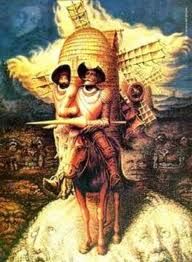Tonight most of North America, especially the east coast, will enjoy the site of a full lunar eclipse. The full moon of September is also the Harvest Moon, the full moon closest to the Vernal Equinox. It’s also a super moon, when the moon’s closest to the earth in its orbit, thus the moon will appear brighter and larger than usual. Because of its proximity during the eclipse, the moon will take on a reddish hue as the earth’s shadow passes across its surface. This is known as a “blood moon.” This is the fourth blood moon over the last 2 years which is called a “tetrad” in astronomical circles. The last time this occurred was in 1982 and will not happen again until 2033.
Needless to say, the event has also brought out the religious fringes, who believe the event is a signal for the end of time. However, according to NASA, there is no current threat of the earth being destroyed by a comet or asteroid for the “next several hundred years.”
For those of you who are camera buffs, Huffington Post Science has some helpful tricks for photographing tonight eclipse
Smartphones have made it easy to capture all sorts of fleeting moments — from a seal riding a whale to the pontiff gliding past in his popemobile.
But if you’re hoping to capture an Instagram-perfect shot of this weekend’s supermoon lunar eclipse, it will take a bit of preparation. After all, you’ll be shooting a darkened moon against the night sky. [..]
Keep your camera steady and your exposure long.
Whether you’re using a smartphone, a point-and-shoot or a DSLR, keeping it steady is essential. As Andreo explains, “Taking photos at night almost always drives up the exposure time, which means you need a stable tripod to mount your camera to in order to keep your pictures from turning out blurry.” If you don’t have a tripod, try resting your camera on a stool, or just try this hack that uses a piece of string.
Once your lens is steady, long exposure will help capture details of the moon’s surface despite the darkness. [..]
Get some magnification.
There are two kinds of zoom. One is desirable for this purpose, and the other is not. With a point-and-shoot camera, zoom until your lens is fully extended toward your subject. But then stop. After the lens is fully extended, your camera switches over to ‘digital zoom’ — which makes your photo look pixelated. It “just crops into your picture to make your subject take up more of the frame, but it isn’t true telephoto,” Leuchter explains. [..]
Pay attention to composition.
Unless you’re able to capture all the tiny details on the surface of the moon, you’ll need other objects in the shot to make it interesting. Snap while the moon is low on the horizon, and “try to find interesting objects to juxtapose with the full moon, like shooting through trees, or using silhouettes and other objects to show size contrast,” says Gerard. [..]
Use a self-timer
Sometimes you set up the perfect shot, but the act of actually pressing the button to snap the picture ruins it. A self-timer allows you to take a hands-off shot — you can even download an app that does it for you! Gerard explains that “using a self-timing feature helps to prevent vibrations in the camera by allowing it to settle before it takes the picture.”
Moon rise in the East at 6:36 p.m. The first shadow on the moon’s “face” will begin around 8:11 p.m. However, the total eclipse starts at 10:11 p.m. and peak at 10:47 p.m. The process then reverses itself and the moon will be back in full view after midnight.
Check your local paper for community events for watching the eclipse. If the weather is overcast in your area, you can watch it here with NASA starting at 8 PM EDT, or you can join us here at 8 PM.


 In 1963, Bob Dylan was asked by the authors of a forthcoming book on Woody Guthrie to contribute a 25-word comment summarizing his thoughts on the man who had probably been his greatest formative influence. Dylan responded instead with a 194-line poem called
In 1963, Bob Dylan was asked by the authors of a forthcoming book on Woody Guthrie to contribute a 25-word comment summarizing his thoughts on the man who had probably been his greatest formative influence. Dylan responded instead with a 194-line poem called  The Twilight Zone is an American anthology television series created by
The Twilight Zone is an American anthology television series created by 

